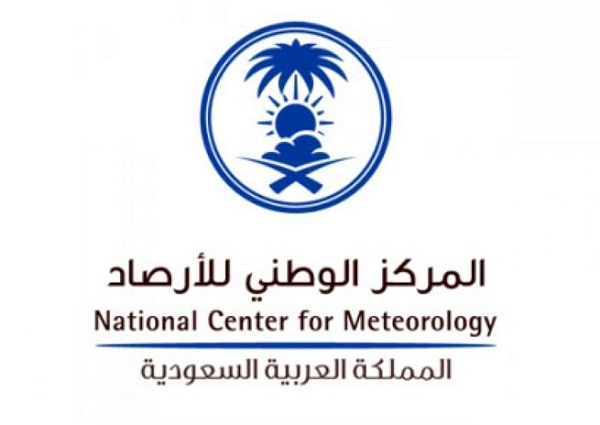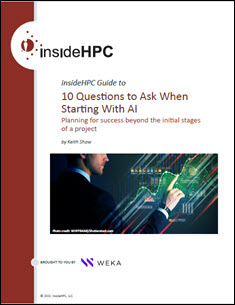 [SPONSORED GUEST ARTICLE] When people think of weather in Saudi Arabia, they probably think of dust storms before flooding. A team led by Lenovo, WeMET P.C. and the University of Connecticut worked with the Saudi National Center for Meteorology to develop and implement a weather prediction system based on High Performance Computing (HPC) that handles both. And it’s already paying life-saving dividends.
[SPONSORED GUEST ARTICLE] When people think of weather in Saudi Arabia, they probably think of dust storms before flooding. A team led by Lenovo, WeMET P.C. and the University of Connecticut worked with the Saudi National Center for Meteorology to develop and implement a weather prediction system based on High Performance Computing (HPC) that handles both. And it’s already paying life-saving dividends.

Jeddah flood, 2022
It rarely rains in the sun-baked city of Jeddah, Saudi Arabia, but when it does, disaster can ensue. The country’s second largest city and a commercial hub on the Red Sea, Jeddah averages only 2.1 inches (52.5 mm) of rainfall per year. But occasionally the city is pummeled by heavy, quick-strike downpours resulting in flash floods that cause widespread property damage, injuries, and death, as happened in November 2009, with a storm that totaled around three inches (90 mm) of rain that killed 120 people.
Starting in 2018, Lenovo and WeMET teamed to develop weather forecasting systems for the National Center of Meteorology of Saudi Arabia. The first system they developed was on a 200-node Lenovo ThinkSystem cluster powered by the first-generation Intel Xeon (SkyLake) processors.
It was tasked with predicting not just the weather but the path of dust and sand from weather activity in the desert as well as wave heights in the Red and Arabian seas and in the Persian Gulf.
In 2021, the Saudi government expanded the Lenovo-WeMET mission, asking them to build a more powerful and encompassing system that could also account for rain event flood prediction and the path that flood waters will take.
“Our HPC infrastructure must keep pace with our weather models, which are becoming more resource-intensive all the time,” said Mohammed Al-Amri of the National Center for Meteorology. “To ensure that we could bring vital weather insights to our customers sooner and with greater accuracy, we initiated the HPC refresh.”
The result is a 350-node cluster comprised of Lenovo ThinkSystem servers powered by Intel 3rd Gen Xeon CPUs. The solution includes several weather, dust/sand and ocean current/wave model configurations, weather ingest data streams, statistical verification packages and several graphical solutions to assist with forecasting.

The addition of a flood forecasting capability was developed by a team of software programmers at the University of Connecticut led by Dr. Emmanouil Anagnostou, Eversource Energy Endowed Chair in Environmental Engineering & Eversource Energy Center Director in UConn’s Hydrometeorology and Hydrologic Remote Sensing Group.
 Among the myriad weather-related challenges faced by the Lenovo-WeMET-UConn team is that in the case of Jeddah, when heavy rain hits, flood waters can rise rapidly because the terrain is flat and the sandy, clay soil is “sticky,” it does not absorb rainfall well. So, the flood prediction capability needed to account for a wide range of topographical variables – ground-level undulations, Jeddah’s street grid and the city’s water drainage system, along with naturally occurring water run-off in the city.
Among the myriad weather-related challenges faced by the Lenovo-WeMET-UConn team is that in the case of Jeddah, when heavy rain hits, flood waters can rise rapidly because the terrain is flat and the sandy, clay soil is “sticky,” it does not absorb rainfall well. So, the flood prediction capability needed to account for a wide range of topographical variables – ground-level undulations, Jeddah’s street grid and the city’s water drainage system, along with naturally occurring water run-off in the city.

In November 2022, the new system passed the big, early test posed by a Jeddah storm. Local news coverage pegged the rainfall at over seven inches (179mm) over an eight-hour period. According to Dr. Zaphiris Christidis, Lenovo’s Worldwide Segment Leader who is deeply involved in the Saudi weather project, the storm of last November was predicted a day in advance with detailed accuracy, giving Jeddah residents time to prepare. That advanced warning was crucial in reducing fatalities to two for a storm that dumped twice the rainfall as the 2009 storm.
“The quality of Lenovo’s partner network is one of the key reasons we choose to work with them. Together with WeMET and Connecticut University, we’re developing a unique forecasting system for flash floods, one of the main hazards facing Saudi Arabia,” Al-Amri said.




